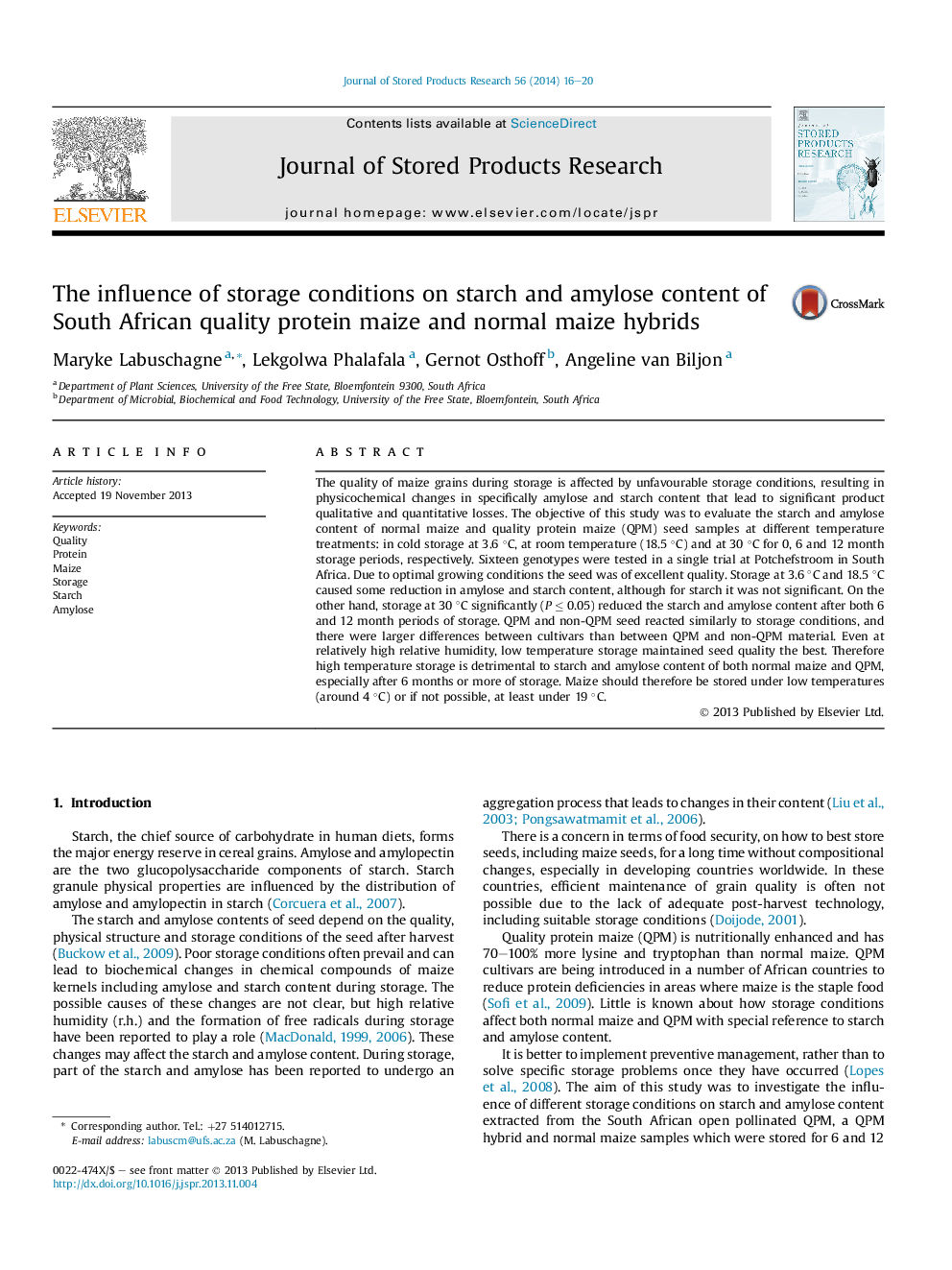| Article ID | Journal | Published Year | Pages | File Type |
|---|---|---|---|---|
| 4517082 | Journal of Stored Products Research | 2014 | 5 Pages |
•Starch and amylose content were negatively influenced by high temperatures.•Amylose content was more sensitive to high temperatures than starch content.•QPM and normal maize reacted similarly to storage conditions.•Low temperature was more important than low humidity to preserve seed.
The quality of maize grains during storage is affected by unfavourable storage conditions, resulting in physicochemical changes in specifically amylose and starch content that lead to significant product qualitative and quantitative losses. The objective of this study was to evaluate the starch and amylose content of normal maize and quality protein maize (QPM) seed samples at different temperature treatments: in cold storage at 3.6 °C, at room temperature (18.5 °C) and at 30 °C for 0, 6 and 12 month storage periods, respectively. Sixteen genotypes were tested in a single trial at Potchefstroom in South Africa. Due to optimal growing conditions the seed was of excellent quality. Storage at 3.6 °C and 18.5 °C caused some reduction in amylose and starch content, although for starch it was not significant. On the other hand, storage at 30 °C significantly (P ≤ 0.05) reduced the starch and amylose content after both 6 and 12 month periods of storage. QPM and non-QPM seed reacted similarly to storage conditions, and there were larger differences between cultivars than between QPM and non-QPM material. Even at relatively high relative humidity, low temperature storage maintained seed quality the best. Therefore high temperature storage is detrimental to starch and amylose content of both normal maize and QPM, especially after 6 months or more of storage. Maize should therefore be stored under low temperatures (around 4 °C) or if not possible, at least under 19 °C.
